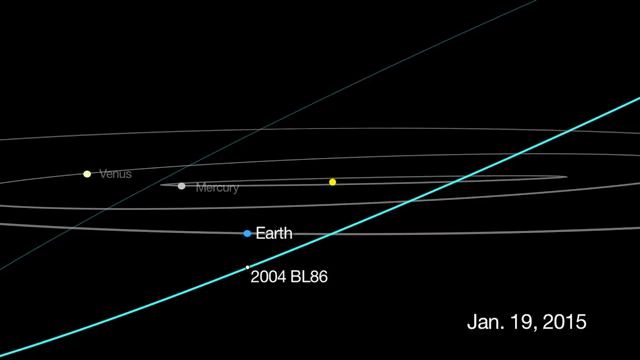SUMMARY
This is AI generated summarization, which may have errors. For context, always refer to the full article.

MIAMI, United States – An asteroid the size of a mountain is about to shave by Earth, in a rare type of flyby that will not be seen for another decade, astronomers said Monday, January 26.
The asteroid, known as 2004 BL86, runs no risk of colliding with Earth and will be about 3 times farther than the Moon when it passes.
“At the time of its closest approach on January 26, the asteroid will be approximately 745,000 miles (1.2 million kilometers) from Earth,” NASA’s Jet Propulsion Laboratory said in a statement.
For this particular asteroid, it will mark the closest pass by Earth in around 200 years.
But as asteroid events go, this one is special because the space rock is so much larger than most, measuring about a third of a mile (0.5 kilometers) while the majority of near-Earth objects are 50 to 100 feet (15 to 30 meters) in diameter.
“It’s the largest known space rock predicted to come this close to us until 2027,” said Sky and Telescope magazine.
The next large asteroid that is known to be making a close approach to Earth will be asteroid 1999 AN10 when it flies past in 2027.
NASA said the asteroid will not be visible to the naked eye, but may be seen with the help of small telescopes and strong binoculars.
The asteroid’s closest approach to Earth is expected around 11 am (1600 GMT), but it will be dim “because Earth will see only a portion of its illuminated side,” Sky and Telescope said.
As the hours pass, it will gain in brightness and the best viewing for those in North and South America, Europe and Africa will range from 8 pm Monday to 1 am Tuesday (0100 GMT-0600 GMT Tuesday).
“During this interval 2004 BL86 will be heading northward through the dim constellation Cancer. It skims the eastern edge of a star cluster called the Beehive (or Messier 44) from about midnight to 12:30 am EST,” the magazine said. – Rappler.com
Add a comment
How does this make you feel?
There are no comments yet. Add your comment to start the conversation.